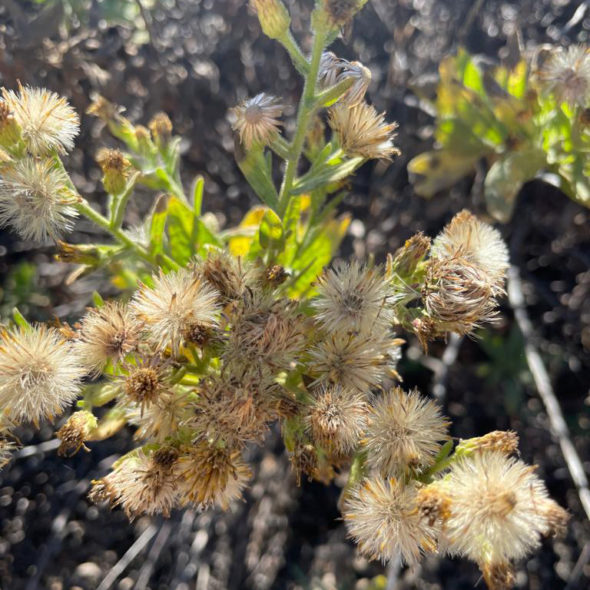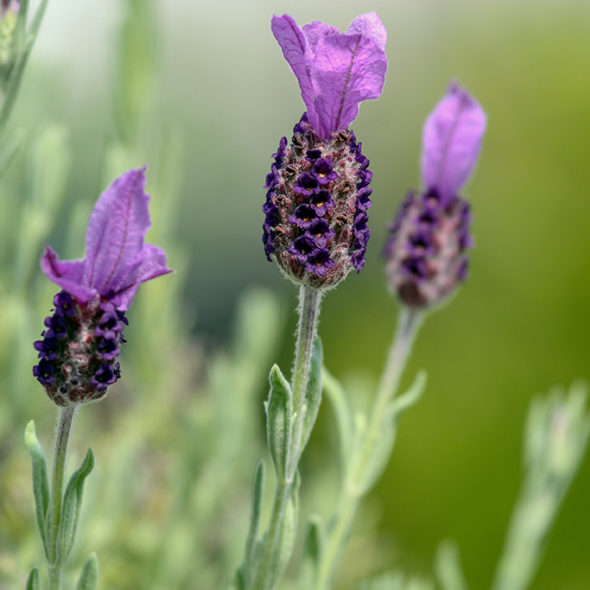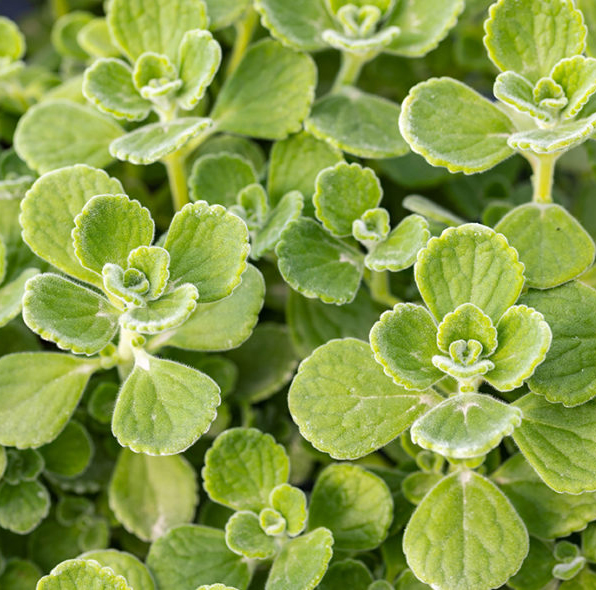After only 6 weeks in Portugal, I am surrounded by pure nature, an irresistible climate, dazzling light and… wonderful scents.
What happiness for an aromatherapist to be in the Arrabida nature reserve / Espichel site, not far also from the Alentejo region. In this region, several species of native aromatic plants and medicinal herbs have long survived in their native ecosystems and have adapted well to nutrient-poor soils and dry, hot summers.
Arrabida Natural Reserve is a site that stands out, a very relevant site.
In a very small area, we can observe ecological conditions that are sometimes radically opposite, such as the Arrábida (dry desert-adjacent habitat) conditions where plants like the Convolvulus fernandesii and Euphorbia pedroi thrive, and sub humid habitats where can find remarkable plants like the Narcissus calcicola or the Quercus coccifera (Carrasco) arboreal.
There are some forms of vegetable relics to be seen which are in good condition. In the sheltered areas of the mountain range, you will find oaks “dominated by the Carvalho-cerquinho (Quercus faginea)” which is the portuguese oak with a “maquis” (small tree evolved to suit the scrubland vegetation of the Mediterranean region) of the strawberry tree (Arbutus unedo, medronheiro), the Brazilian peppertree (Aroeira-vermelha) and tree heathers (Erica arborea), all authentic relics of other geological times.
Perennial forests dominated by the Kermes oak (Quercus coccifera) and Aderno (Phillyrea latifolia), which are commonly known as the Mediterranean maquis and constitute the endemic vegetation of Arrábida, are considered of exceptional value. The maquis has important botanical value, with a variety of nuclei, seeds and aromas. Rosemary, thyme, lavender, pascoínhas, heather (Calluna vulgaris) are representative examples of the Mediterranean aromatic flora. In floristic terms, about 1450 “taxa” (categories) have been inventoried, within which 90 were classified as being ancient plants with a huge heritage variety. . Some of those identified as such are the following, with links included if you wish to read more about each: Arrhenatherum pallens, Iberis procumbens subsp. Microcarpa, Euphorbia transtagana, Juncus valvatus, Thymus camphoratus, Thymus carnosus, Armeria rouyana, Ionopsidium acaule, Arabis sadina and Silene longicilia.


3 selected aromatic plants, I chose to get to know further
Organic Spanish Lavender Essential Oil, Lavandula stoechas
This plant is endemic to the Iberian Peninsula and its unique fragrance can be scented during the blossoming Spring in the mountains and along the trails of religious pilgrimages from small villages. Despite being lesser-known, this plant possesses similar properties and uses as the common lavender. However, unlike the latter, its high fenchone content restricts its use to external administration only.
How to use?
- If inhaled: Steam or pure inhalations act as an expectorant of respiratory secretions and soothes the cough.
- In the bath: Spanish lavender essential oil in a bath has a relaxing and anti-depressing effect, preventing insomnia. Massage:
- If diluted in vegetable oil (3-5%, approx. 60-100 drops per 100 ml), it relaxes the muscles and relieves rheumatic pain. It also disinfects and heals wounds, burns, and insect bites, due to its antimicrobial action.
Organic Rock Rose Essential Oil, Cistus ladanifer – Anti-inflammatory
Organic rock rose essential oil is the gum rock rose, endemic to the Mediterranean basin and it is abundant in the Alentejo and Algarve mountains. In Spring, its flowers add a beautiful splash of white to the landscape. However, it is in the hot Summer days that they are manually collected. No less than 1500 kg of plants are necessary to produce just one litre of essential oil! A few drops in a water diffuser have a relaxing effect. This essential oil regulates the nervous system and helps reduce depression, distress, anxiety, stress, nervous shock and nervousness. Since ancient times this plant has been considered the plant of meditation and spirituality.
How to use?
- With a diffuser with water or on wooden balls: Some drops on wooden balls are an excellent moth repellent in wardrobes and drawers.
- Pure: Used pure, it disinfects wounds. Among its many properties it also stops nosebleeds, helps heal wounds, and eliminates acne. It fights against skin fungus and cold sores caused by the herpes virus, and it alleviates the symptoms of psoriasis and dermatitis. If used in gargles (3-4 drops into a glass of warm water) it has anti-inflammatory and antiseptic properties. It kills the pain caused by gingivitis, as well as by toothache and mouth sores.
- Massage: Diluted in vegetable oil (1-2%, approx. 20-40 drops per 100 ml), it can be used for massage. It favours lymphatic drainage, reduces the abdominal pain of menstruation and strengthens the immune system. It is also used in cases of rheumatoid arthritis.
- Natural Cosmetics: Added to creams or lotions, or diluted in vegetable oil it prevents skin ageing and the appearance of skin flabbiness and wrinkles. It also reduces skin marks and scars. Additionally, this essential oil is used in the composition of perfumes or to fix other scents, as well as in the production of soaps and detergents.
What are the recommendations?
It must not be ingested because of its toxicity for the nervous system, liver and kidneys.
Organic Spanish Thyme Essential Oil, Coleus amboinicus – Anti-Microbial and Anti-Inflammatory
In ancient times, the Egyptians used thyme for embalming, the Greeks to prevent contagious diseases, and the Romans used it to get courage. Modern aromatherapy recognizes its germicidal properties, its positive effect against respiratory conditions, and its potential for self-confidence enhancement. Spanish thyme is an endemic species from Iberian Peninsula, which is common in Portugal.
How to use?
- With a diffuser with water or on wooden balls: By adding just a few drops in a diffuser with water or on wooden balls, its essential oils give off a remarkably fresh scent, which is a great antiseptic and insect repellent.
- If inhaled: If inhaled (pure or with water steam), it has bronchial, expectorant and antispasmodic actions, being used in the treatment of respiratory diseases (sinusitis, bronchitis, laryngitis, pharyngitis) and in the relief of productive cough. It also strengthens the immune system, preventing respiratory infections.
- By ingestion: The ingestion of this essential oil (2 drops in a teaspoon with honey or 1-3 drops in a teacup with hot water, twice a day after meals) has similar effects to those of inhalations. It also helps digestion, eliminates intestinal parasites, reduces extra weight, stimulates the hormonal production of oestrogen, regulates the menstrual period and delays menopause.
- Massage: Diluted in vegetable oil (5%, approx. 100 drops per 100 ml) and applied in massage, it has a calming and sedative effect on rheumatic pains, warming and relaxing the muscular system. For its anti-bacterial and fungicide properties, it is used topically in the treatment of skin infections caused by fungi, genital yeast infection, eczema and acne. In natural cosmetics, it is diluted in vegetable oil, lotions and creams to clean normal and oily skin. It is also added to shampoo to stimulate the growth and strengthening of the hair, and it gives soaps a nice fresh scent.
- In gargles: It can be used in gargles as a mouth-wash to disinfect and remove bad breath.
- In the bath: A few drops in a bath help you to find motivation, to achieve your goals and give you strength to recover from emotional stress and adverse situations.
What are the recommendations
The essential oil must not be used internally on patients with digestive or neurological disorders. High doses may cause spasms. People with respiratory allergies should avoid its external use. It must not be used on children younger than 6 years old.Organic farming techniques are used for growing Spanish Thyme. Farmers here create the conditions for their plants to prosper in their natural environment and so the endemic plant species return to their native habitat (permaculture).




